Types of Art – An Exploration of the Different Types of Art
Since prehistoric times, humans have been creating art through forms and mediums. Over the years, as tools and technologies evolved, the concept of what art is has become the subject of intense debate. There are multitudes of opinions and theories on what can be classified as art, however, in this article, we will discuss the top eight forms of art that have shaped the trajectory of art history itself. Keep reading for a thorough overview of these major forms of art!
Table of Contents
What Is Art?
There are about as many definitions of art as there are people alive. As a widely accepted definition, art is produced when one’s imagination or creativity is used to create something that can be directly experienced through our senses. Although visual art, witnessed through our sense of sight, is the most common form of art, art itself can appeal to other senses, including our auditory and tactile senses.
Most art forms discussed in this article date back thousands of years. From prehistoric cave paintings and figurines found in ancient caves, to the exquisite architecture and sculpture of ancient Greece and Rome, art forms have played a monumental part in personal and public life.
As the different techniques in art evolved, much of the conversation in art circles were concerned with what the word “art” meant.
This central debate is an important factor in the development of personal style within the broader art movements that have emerged over the years, with particular emphasis on the relationship between utility and aesthetics. The most iconic and revolutionary example of an artist who attempted to shift the definition of art and sculpture was Marcel Duchamp, whose unforgettable ready-made sculpture, The Fountain (1917), explicitly challenged conventional meanings of art. Duchamp claimed that a slightly modified urinal deserved to be classified as art and as a sculpture innovated by himself. This is also a prime example of how art has been leveraged as an important medium through which artists can provide political and social commentary.

Art types should not be confused with art genres, which is a different classification system that was developed by the French Royal Academy and includes still life, portrait, and history, among many others. The different types of art should also be distinguished from form in art, which refers to a specific element within an artwork that relates to shape.
Form in art occurs alongside other elements such as texture, color, space, shape, value, line, and color.
Art provides us with a crucial glimpse into history as a means through which we can understand the life of the humans that came before us, and without which the world would be a far less interesting and inspiring place! It provides a doorway into galaxies of possibility for expression and a valuable platform for political and social commentary.
Exploring the Eight Most Important Types of Art
Although there has been much speculation regarding the definition of art over the years, there is a general consensus that there are around eight main kinds of art, most of which have existed for centuries, if not thousands of years. These different types of art encompass painting, sculpture, installation art, architecture, literature, music, cinema, and theater.
The Art of Painting
Painting is one of the oldest types of art that dates as far back as tens of thousands of years and is evident at various cave sites and rock shelters across the world. Famous sites include the Drakensberg in South Africa, the Northern Territory in Australia, and the Lascaux paintings in France, among many other important historical sites. The majority of these cave sites have become important world heritage sites under UNESCO to preserve cultural history and uphold the maintenance and recognition of archaeological sites. To understand painting, one must recognize its historical legacy and use in art.
Painting refers to the application of paint, usually on a two-dimensional surface.
Paint also consists of a pigment combined with a binding agent such as oil, egg, or water and possibly a filler, to make the quantity more substantial. In ancient times, people relied on natural materials such as plants, bones, ochre, and charcoal to paint, but today, artificial coloring is the primary choice for most artists. In modern times, various other additives were included in paint mixtures and their variations to ensure that paint is not only user-friendly and convenient, but also environmentally safe.
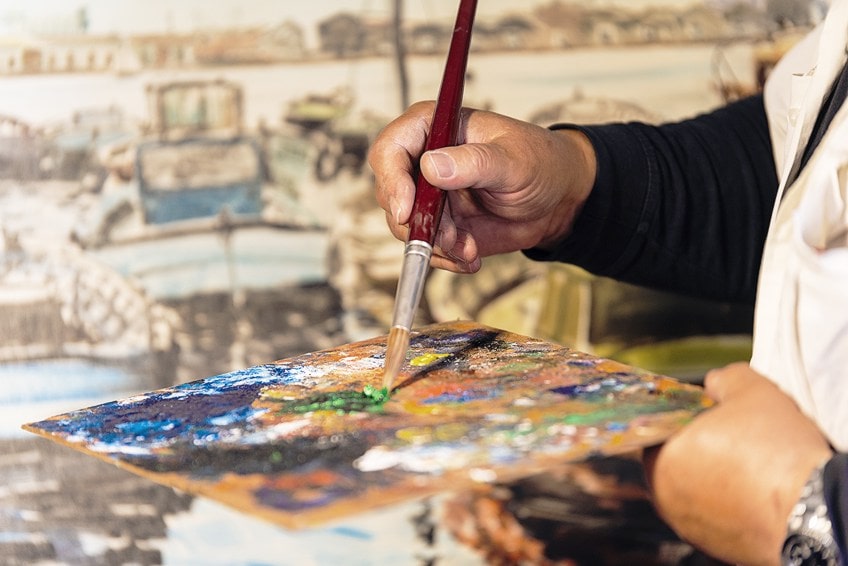
When it comes to the application of paint, the sky’s the limit. Paint brushes, your own fingers, spray cans, or sponges can be used to engage in painting. As new techniques and styles emerged, painting became an institution in its own right, inspiring study, analysis, and debate. Paintings can be classified into one or several of many art movements that are characterized in terms of the underlying philosophy that determined the style, content, and subject matter of the paintings, as well as their temporal location in terms of their relationship to previous art movements.
Well-known art movements that started in Europe include Impressionism (1867-1886), Surrealism (1924-1966), and Expressionism 1905-1920).
Different cultures all over the world developed different styles, including styles defined by the Pop Art movement in the USA during the mid-20th century. There are numerous famous painters who could easily be named as the most significant painters, however, some of the most prominent figures include Impressionists like Claude Monet and Mary Cassatt, as well as Surrealists like Salvador Dalí (1904-1989) and pioneers of Abstract Expressionism such as Jackson Pollock (1912-1956). Many consider abstract painting to be one of the most influential types of painting that can employ a variety of art forms and mediums to convey abstract visuals and themes.
Some of the most prominent art movements and styles emerged from movements inspired by Cubism and Realism in the 20th century, as well as notable Renaissance figures like Leonardo da Vinci and Cubists like Pablo Picasso and Georges Braque. It is important to also recognize that painting can encompass other fine art forms such as collage, which includes the arrangements of objects to create visual narratives as an element of painting or assemblage. Collage can thus be used to elevate painting or be fused with sculpture to create assemblages.
The Art of Sculpture
Sculpture is another ancient art form that dates back to some of the earliest civilizations on Earth. Unlike painting, this form of art involves the creation of art in the three dimensions. The type of material used can be either natural or artificial, and can range from materials such as clay, metal, bronze, marble, and wood to objects that artists come across in their everyday lives.
Different processes can be used to create a sculpture, including modeling, casting, assembling, and carving.
Sculptures can be free-standing, independent forms, or they can be produced in relief, where the form emerges from a background. An example of a free-standing sculpture is Christ the Redeemer (1931) in Rio de Janeiro by Paul Landowski. One might also equate the origins of true sculpture to the master works of High Renaissance sculptor Michelangelo, whose work had a tremendous impact on Western sculpture.

Mount Rushmore, which was constructed between 1927 and 1941, is a colossal demonstration of a sculpture executed in relief, as well as the elaborate forms carved into the temple complex at Khajuraho in India. Sculptures can also include other forms of art, especially painting, as a form of decoration or embellishment.
Figurines and larger examples of sculptures from the ancient world have been found in various locations around the world. Such sculptures often demonstrated a spiritual or religious function.
The ancient Greeks and Romans were also known for their exceptional sculptures with the most notable example being The Orator and Head of a Roman Patrician, both of which were created in the 1st century BCE. The Statue of Liberty (1886) is a modern example of sculpture that has become world famous.
The Art of Installation
In addition to sculpture, artists can also explore the world of installation art, which relies on a variety of media to provide an immersive and enhanced experience of art. Installation art is often connected to sculpture and performance art, which involve artists arranging objects and artworks in a site-specific space to ensure that the message of the artwork is received and understood.
Installation art can also be understood as large-scale works that encompass mixed media and is usually set up for a set duration in a particular location.
Installation art provides a more sensory experience for viewers and engages with the temporality of the artwork and its conceptual occupation of space. Among the most popular installation artists include figures like Yayoi Kusama, Doris Salcedo, Kurt Schwitters, Kara Walker, and Damien Hirst.
The Art of Architecture
People often identify architecture as going back to the very first structures that people built as places of human residence and protection. If we are to define architecture in this way, we can think of the teepee in America or the yurt in Mongolia.
Some architecture has a distinct aesthetic quality though and the relationship between utility and beauty is sometimes central in architectural design.
Famous examples of architecture that blurs the boundaries between utility and art include the pyramids in Egypt, the Colosseum (70 CE) in Rome, and the magnificent Taj Mahal (1648) in India. Each of these unique structures possess their own story, which continues to capture our hearts and remind us of earlier times in the collective history of architecture and art that reflect the beautiful, and sometimes darker aspects of what it means to be human.

Some of the extraordinary modern-day architectural marvels include the Leaning Tower of Pisa (1173-1372) in Italy, the Eiffel Tower (1887) in France, and the Sydney Opera House (1973) in Sydney, Australia. Other contemporary buildings that were built into existence and have shaped the way we see buildings include the Louvre (1793), the Glass House (1949-1995), and the Guggenheim Museum (1959). Like other kinds of art, architecture also has various styles that reflect certain characteristics and design principles mimicked in art. Some of the most well-known styles of architecture include:
- Classical architecture
- Renaissance architecture
- Gothic architecture
- Baroque architecture
- Neoclassical architecture
- Bauhaus architecture
- Victorian architecture
- Modern architecture
- Post-modern architecture
The Art of Literature
The word “literature” is derived from the Latin word literatura, which translates to “letters” in English and refers to the written word in particular. Language is a powerful and symbolic way of communicating and writing is no exception. The earliest texts date back thousands of years to ancient Mesopotamia, although it is thought that writing developed independently on different continents.
The first piece of literature with an identifiable author was a collection of prayers written by the priestess Ur in Sumeria, Mesopotamia.

Across multiple cultures and civilizations, people fused their own technologies and resources to create new types of literature and texts that borrowed materials from the natural environment. For example, hieroglyphics were written on stone tablets and papyrus (handmade paper made from plants grown in water). In Sumeria, evidence of the first writer was discovered around 1595 BCE and reflected that the writing from Sumerian culture was executed using wet clay to communicate across long distances. This proved useful when cities began flourishing and trade activities increased.
Words are the medium the writer manipulates in creative ways to stimulate an emotional response in readers.

Literature includes poetry, articles, novels, plays, folklore, myths, and legends, as well as other forms of writing. It is most often divided into various genres, similar to art. The history of literature is teeming with literary giants and their works of art, and it is therefore impossible to pinpoint the most influential or the best without resorting to subjective opinion. Libraries have kept millions of books around the world since ancient times. Today, there is a growing industry in electronic text, books, and the storage of data. While digital formats for literature have become a staple mode of access in the 21st century, some of the world’s most significant authors include Cicero, Horace, Virgil, and Ovid among the giants of Latin literature, as well as creative writers such as Dante Alighieri, William Shakespeare, and George Orwell. Prominent authors who received global recognition for their contribution to world literature include figures like Leo Tolstoy, Mark Twain, Franz Kafka, John Ronald Reuel Tolkien, Alexandre Dumas, and Gabriel García Márquez.
The Art of Music
Music is created when there is an organization of sounds, as vibrations, that are put together to form an audible composition. Elements of a musical composition include harmony, timbre, melody, and rhythm. Although the presence of music in ancient civilization is harder to trace than visual art, traces of musical instruments have been found that are thousands of years old.
Music and sound created by voice or instruments (or both) have played an important role in various cultures across the globe, making it a universal art form.

Similar to paint, early instruments were made from a variety of natural resources that communities found within their vicinity, while today, a vast selection of ready-made instruments are available for musicians. These instruments are further classified into three groups: string (violin and guitar), percussion (cymbals and drums), and wind (flute and saxophone) instruments.
Originally, music was confined to its community or environment but thanks to modern developments in technology, music can be produced in different places in the world and distributed widely to enable more accessible to people in distant locations. Additionally, there is also a wide variety of genres to enjoy, including folk, funk, blues, hip-hop, pop, rock, electronic, gospel, country, and indie to name a few.
The Art of Cinema and Film
Relative to the other art types discussed in this article, cinema is a fairly recent form of art. Instead of attributing the development of cinema to one inventor, many great minds contributed to the entrance of cinema as an art form and an appreciated invention of our time.
Cinema first took the form of a “kinetoscope” in 1893, which enabled only a single person to view the motion picture at a time. The first public show debuted in 1895 in Paris.
Early films were not produced as we know of today and neither was the context in which they were broadcast. Visual images on screen lasted only a few minutes and some of the content included comedy skits, news, and pictures of lands beyond the borders. Unlike cinema today, there was often much participation from the audience.

The progression of cinema into the immensely popular and accessible format we know of today occurred within the space of a little over 100 years. Below are the major events that took place that made cinema more attractive to the public:
- 1891: Prototype of kinetoscope by the Edison Company
- 1893: The kinetoscope made its first public appearance
- 1895: Public audience by the Lumière brothers using their Cinématographe
- 1909: Color was introduced
At the turn of the century, much was afoot in the industry of cinema with many new film industries emerging, especially in Europe and Russia. The first few films to emerge did not have sound but by the 1930s, most movies had sound.
Since then, the attendance rate for cinema lovers has grown exponentially, with a movement in the last few decades toward an increase in film accessibility in private spaces.
The Art of Theater
Theater is a performance art that usually includes a visual element that has been used for entertainment purposes for thousands of years. One of the most famous locations, central to bringing Romans together for entertainment, was the Colosseum, which is now in ruins and was once a symbol of the flourishing Roman Empire. Indeed, Rome in the 6th century BCE was seen as the earliest example of theater in the Western world.

Long before oral storytelling, voice, sounds, and gestures were used to transmit important information from one generation to another, before written language was invented. Evidence for visual storytelling goes back tens of thousands of years but it is widely accepted that storytelling through sound, song, dance, and diagrams formed an integral medium through which traditions were passed down and retained. Theater is a unique form of art in the sense that it can combine several different forms of art in one theater production. A variety of artists can be involved in the range of complex elements that may be involved in a theater production, including costume and stage designers, musicians, actors, and writers.
Theater also encompasses several other sub-categories such as puppetry, dance, circus entertainment, magic performances, and plays.
The history of theater is rich and alive with the spectrum of human emotion that we have all experienced when witnessing the stories embodied in performance. Genres seen in theater performances vary as in art and include genres such as tragedy, comedy, romance, musicals, and drama. Some famous modern-day theater productions include Lord of the Dance and The Lion King which were started in 1996 and 1997 respectively.
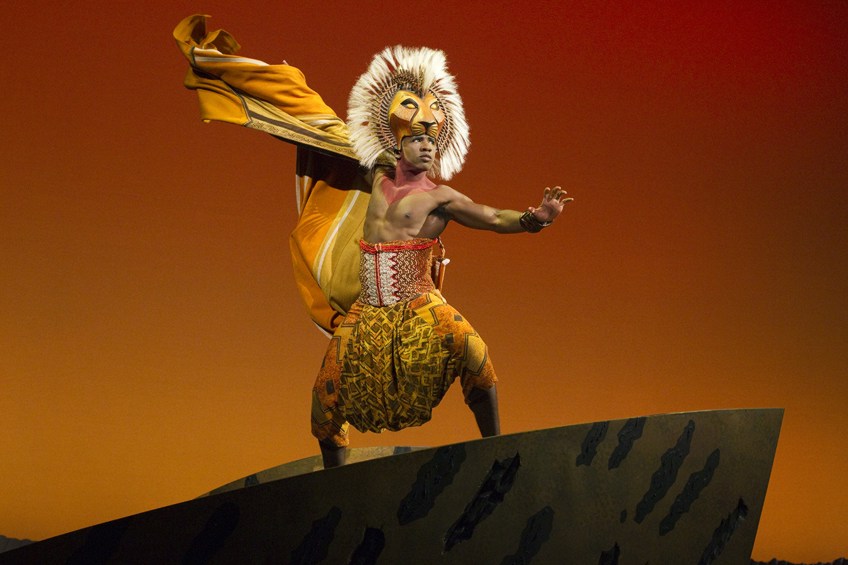
Exploring Other Art Types
In this article, we have explored the eight major types of art that have permeated the boundaries of space and time, and infiltrated our conceptions of temporality to embody an enduring creative spirit that is the heartbeat of human life. Contemporary art has taken on new faces and forms that also include the art of fashion, digital art, graphic design, and photography, which are equally as significant as these top eight art forms.
The thread of creativity, expressed in the form of theatre, music, painting, sculpture, installation, architecture, cinema, and literature has continued to evolve and shape the discourse of art as we know it. Art continues to bring color and life into an ever-changing world in a way that not only stimulates an intellectual response but also touches our hearts.
Take a look at our different types of art webstory here!
Frequently Asked Questions
What Is the Definition of Art?
Since humans started producing art thousands of years ago, the meaning of the term has become a topic of debate. The common element in all definitions of the word “art” is an element of creativity in the production of something that is accessible to the human senses or experience. Typically, art is visual and executed in the forms of painting, drawing, or photography, but it can appeal to other senses as well. Art combines the dimensions of functionality and aesthetics.
What Is the Importance of Art?
Art allows for creative expression and can bring beauty into built environments. It is also a medium through which socio-political commentary and criticism can be communicated. Art in all its forms gives us insight into the social and cultural history of humanity and can bring people together in a community that is based on mutual enjoyment and creativity.
What Are the Eight Different Forms of Art?
There are many ways of categorizing different art forms, most people agree that sculpture, installation, architecture, literature, theatre, cinema, painting, and music are the eight primary art forms. Other important art forms that should also be taken into account include photography, digital art, and fashion.
What Are the Different Types of Fine Art Forms?
According to art history, there are five main types of art forms in fine art. These include painting, sculpture, poetry, architecture, and music. Literature can also encompass poetry, prose, drama, and fiction, which can also be incorporated into fine art.
Isabella studied at the University of Cape Town in South Africa and graduated with a Bachelor of Arts majoring in English Literature & Language and Psychology. Throughout her undergraduate years, she took Art History as an additional subject and absolutely loved it. Building on from her art history knowledge that began in high school, art has always been a particular area of fascination for her. From learning about artworks previously unknown to her, or sharpening her existing understanding of specific works, the ability to continue learning within this interesting sphere excites her greatly.
Her focal points of interest in art history encompass profiling specific artists and art movements, as it is these areas where she is able to really dig deep into the rich narrative of the art world. Additionally, she particularly enjoys exploring the different artistic styles of the 20th century, as well as the important impact that female artists have had on the development of art history.
Learn more about Isabella Meyer and the Art in Context Team.
Cite this Article
Isabella, Meyer, “Types of Art – An Exploration of the Different Types of Art.” Art in Context. November 4, 2021. URL: https://artincontext.org/types-of-art/
Meyer, I. (2021, 4 November). Types of Art – An Exploration of the Different Types of Art. Art in Context. https://artincontext.org/types-of-art/
Meyer, Isabella. “Types of Art – An Exploration of the Different Types of Art.” Art in Context, November 4, 2021. https://artincontext.org/types-of-art/.


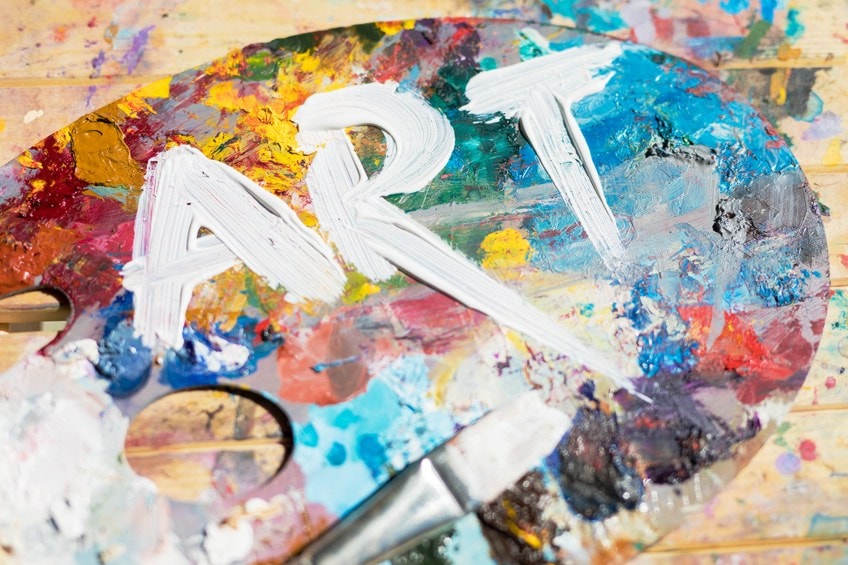


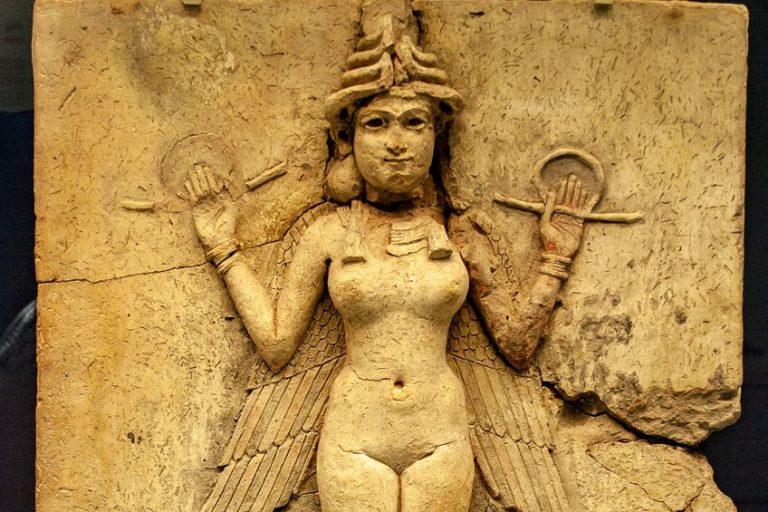

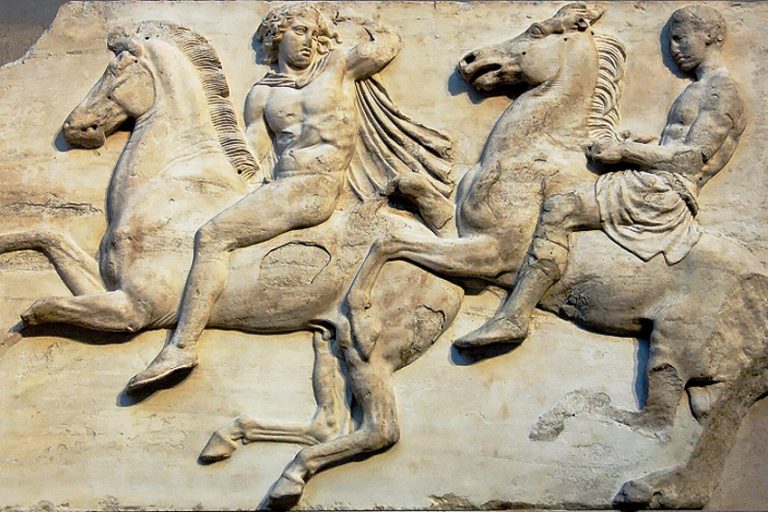
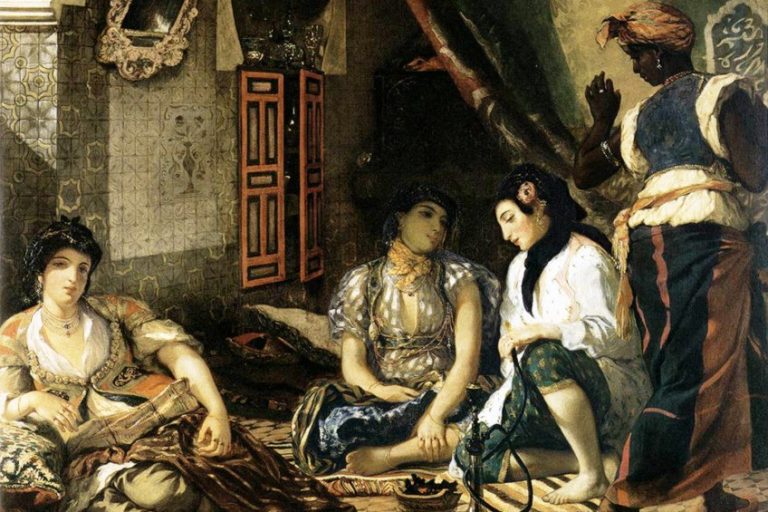
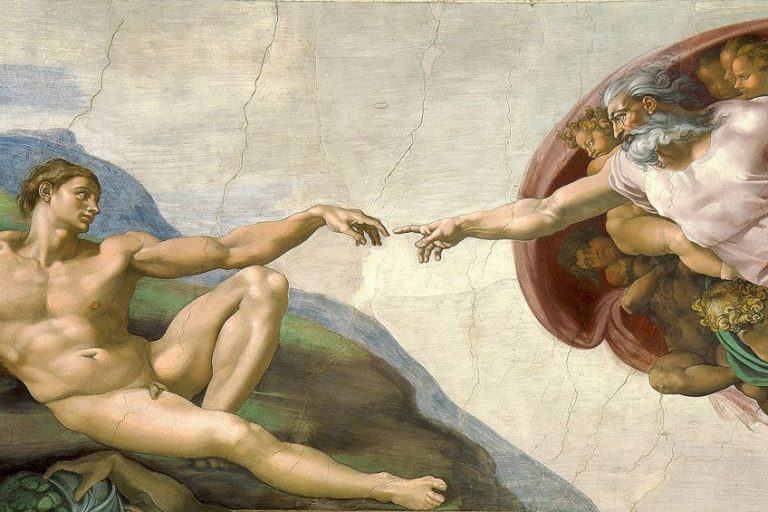


Isabella Meyer’s article is like a cool trip through time, talking about different kinds of art, from old cave paintings to today’s movies. She explains what art is and why it’s important, mentioning famous artists and their groundbreaking works. Meyer also tells us how art connects us to the past and keeps evolving with new styles. It’s like a fun guide to understanding and appreciating the awesome world of art!